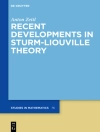This volume focuses on contributions from both the mathematics and life science community surrounding the concepts of time and dynamicity of nature, two significant elements which are often overlooked in modeling process to avoid exponential computations. The book is divided into three distinct parts: dynamics of genomes and genetic variation, dynamics of motifs, and dynamics of biological networks. Chapters included in dynamics of genomes and genetic variation analyze the molecular mechanisms and evolutionary processes that shape the structure and function of genomes and those that govern genome dynamics. The dynamics of motifs portion of the volume provides an overview of current methods for motif searching in DNA, RNA and proteins, a key process to discover emergent properties of cells, tissues, and organisms. The part devoted to the dynamics of biological networks covers networks aptly discusses networks in complex biological functions and activities that interpret processes in cells. Moreover, chapters in this section examine several mathematical models and algorithms available for integration, analysis, and characterization.
Once life scientists began to produce experimental data at an unprecedented pace, it become clear that mathematical models were necessary to interpret data, to structure information with the aim to unveil biological mechanisms, discover results, and make predictions. The second annual “Bringing Maths to Life” workshop held in Naples, Italy October 2015, enabled a bi-directional flow of ideas from and international group of mathematicians and biologists. The venue allowed mathematicians to introduce novel algorithms, methods, and software that may be useful to model aspects of life science, and life scientists posed new challenges for mathematicians.
สารบัญ
Introduction: Mathematical Modeling.- Genome dynamics.- Dynamics of biological networks.- Pattern recognition dynamics.- Dynamics of polymorphisms.
เกี่ยวกับผู้แต่ง
Alessandra Rogato is researcher at Institute of Bioscience and Bio Resources of the Italian National Research Council (CNR). Her research interests have been progressively enriched by the different research experiences she had working in different research Institutes: at the Institute of Genetics and Biophysics ‘Adriano Buzzati-Traverso’ (CNR) in Naples Italy during her Ph D studies and, after at the Stazione Zoologica A. Dhorn of Naples in Italy for her post-doc; and in Paris, France, as young investigator at Laboratoire de Génomique des Microorganismes UMR 7238 CNRS-UPMC, and shorter working experiences at the Department of Genetics and Experimental Bioinformatics at University of Freiburg, Germany and at the Weizmann Institute of Science in Rehovor, Israel. Major objective of her research interests is to decipher the molecular secrets underlying the ecological success of living photosyntetic organisms (plants and marine microalgae) and their capacity for handling different adaptive solutions in order to succeed in a variable environment. In paricular her research interests is to fully exploit novel genetic tools and genomic information to identify the mechanisms controlling marine diatom growth and distribution in the marine environment.
Valeria Zazzu – From 2013 until 2015, CNR Researcher at Institute of Genetics and Biophysics (IGB) “ABT” in Naples, Italy, involved in the project “New markers identifying dementia: a multidisciplinary approach”, aiming at cross-linking dementia with neurodegenerative processes.From 2011 until 2012, member of the leading scientific coordination team for the IT Future of Medicine initiative, focussed on personalised medicine, one of the EU FET flagship pilot projects launched by the European Commission, at the Max Planck Institute for Molecular Genetics, Berlin, Germany.In 2011 Ph D degree in Molecular Biology, Humboldt University, Berlin, Germany. Thesis title “The human G protein-coupled receptor GPR30: interaction partners and expression analysis in endothelial cells”.From 2006 until 2011, with a Marie Curie Ph D fellowship, Ph D student in the laboratory of Prof. Ruiz Noppinger at the Center for Cardiovascular Research, Charité – Universitätsmedizin (Berlin, Germany).In 2004 Master of Science in Biology, University of Naples “Federico II”, Naples, Italy. Thesis title: “Functional characterisation of a novel protein interacting with the onco-protein Bcl-XL”.
Mario Guarracino is researcher at High Performance Computing and Networking Institute of the Italian National Research Council. He received a Ph D in Mathematics defending a thesis on projection techniques for parallel sparse linear algebra and an Ms in Applied Mathematics. His postdoctoral training from National Research Council focused on low cost high performance architectures for scientific computing. He has been collaborating with Center for Applied Optimization at University of Florida since 2005. He has taughtvarious undergraduate courses in both computer science and mathematics. His research interests include machine learning methods for computational biology and planning and development of high performance computational components for parallel and distributed problem solving environments. He is author of publications in the field of high performance scientific computing, computational biology and machine learning.












